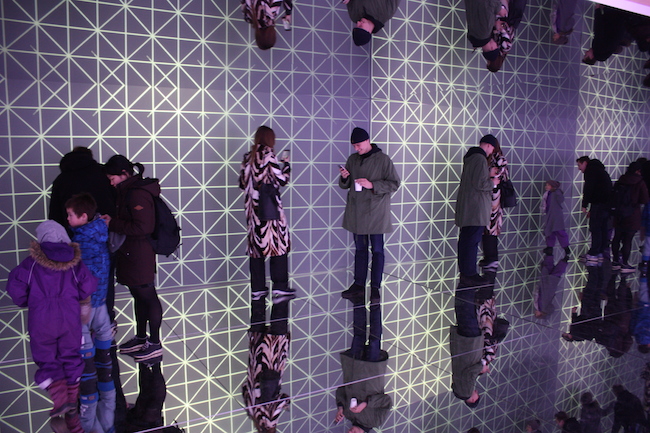
CPH:DOX 2017
20/03/2017
CPH:DOX
Copenhagen International Film Festival
March 16-26, 2017
CPH:DOX is back after taking a brief time out in 2016 due to a strategic decision to move the festival from the busy documentary film festival month of November to March. Since its launch in 2003, the festival has grown steadily, setting new audience records every year, as well as becoming an important industry event internationally and locally. Today, CPH:DOX is among the largest documentary film festivals in the world and has developed its own unique identity. Nevertheless, the ambitions don’t seem to have diminished as the festival keeps evolving continuously. From the beginning, CPH:DOX has aimed to expand the idea of what the documentary genre is, showing it in all of its rich diversity, and thus disrupting its somewhat dull image.

Xenoi, 2016. Deborah Stratman (USA, Greece). Nominee in the category New:Vision Award
This year’s edition is no exception. The festival programme presents more than 200 films (75 of which are world premieres) divided into five different international competitions; also scheduled are an audience award, a number of different series, and an abundance of other events like concerts, performances, talks, debates and conferences, and more.

Last Men in Aleppo, 2017. Feras Fayyad, co-directed by Steen Johannessen (Denmark, Syria, Germany)
The world seems to be in the middle of a transformation, the outcome of which nobody can currently foresee. Therefore, the role of documentary film is more crucial than ever, not only in terms of shedding light on issues of concern, but also on attempts to actively take part in change. The question of whether art can change the world and reality is at the very core of CPH:DOX. Many of the films in the programme bring into focus the current state of affairs in the world today and the major challenges that it faces right now, ranging from the war in Syria, refugee crises, the uncertain future of the EU, the rise of populism and nationalism, and the pressure on democracy and truth, through to climate change and the impact of technological advances on human life. The festival opened with the Grand Jury Prize winner at this year’s Sundance Film Festival, Last Men in Aleppo; directed by Feras Fayyad, in collaboration with Danish film-maker Steen Johannessen, it has been nominated in the main competition for the Dox:Award. The film follows the volunteers from a Syrian aid organisation, the White Helmets, in their courageous work rescuing civilians from the war zone in Aleppo.

The Battle Of Mosul, 2017. Bernard-Henri Lévy (France, Iraq)
There are also two films on the programme by French philosopher and writer Bernard-Henri Lévy: the world premiere of The Battle of Mosul – a report from the forefront of the battle against the Islamic State; and Peshmerga, a predecessor to The Battle of Mosul, about the local Peshmerga troops in Iraqi Kurdistan fighting against the invasions of the Islamic State. Bernard-Henri Lévy joins them along 1000 kilometre-long front line on the way to Mosul. It will also be possible to hear a debate between Henri-Lévy and the Danish news presenter Adam Holm, which is a part of a new initiative, CPH:Meetings – a series of conversations between artists, writers, musicians and film directors and acclaimed international and Danish public figures on current issues and their ideas on solutions.
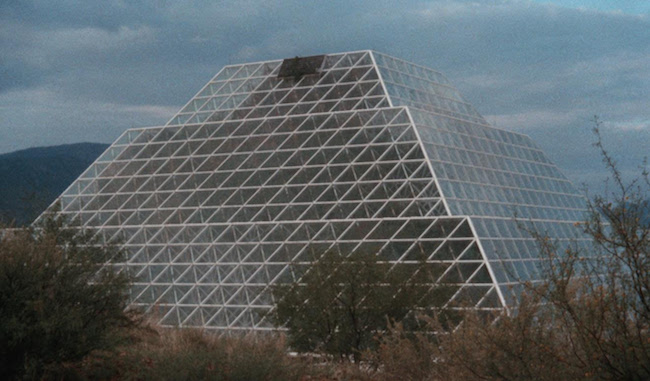
Urth, 2017. Ben Rivers (United Kingdom)
However, CPH:DOX also reaches beyond the harsh realities of the present, or rather, it offers viewers the possibility to encounter reality from another, more unusual, perspective. The festival continues its dedication to a strong focus on the visual arts with its series of films specifically dedicated to art: scheduled are a number of experimental documentaries which themselves lie somewhere in-between art and documentary, as well as film and video works by artists and about artists. 14 of the films are participating in the New:Vision competition. This category offers viewers the chance to experience in the cinema films that usually can only be viewed in museums or art galleries. Among the nominees is Urth, a film by British artist and filmmaker Ben Rivers, whose films are always worth seeing. Urth was created for Ben Rivers’ first solo exhibition in the USA at the Renaissance Society in Chicago. It was filmed inside the failed and closed-down ecosystem Biosphere 2.0 in Arizona – a laboratory for creating an artificial Planet Earth in case the planet were to be destroyed by climate changes.
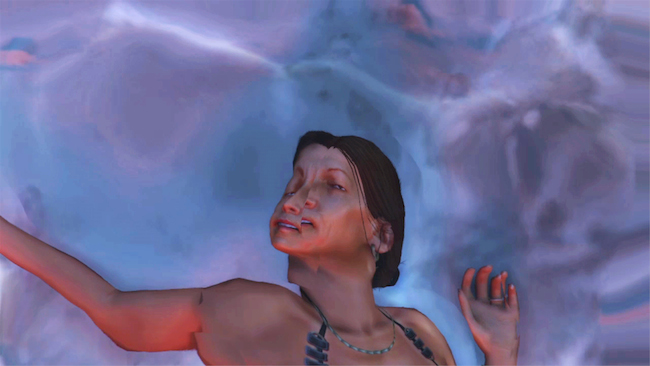
Life Imitation, 2016. Zhou Chen (China)
Also slated for screening is Chinese artist Zhou Chen’s Life Imitation, which has been nominated for the New:Vision prize, and which deals with how human existence has been shaped by technology. It is a dark portrayal of the everyday life of the young Chinese – a life in which loneliness and isolation seem to have become permanent conditions, and human contact and the expression of emotions happen mostly virtually. In the film, scenes from real life and online chat dialogues merge with virtual scenes from a computer game, thus dissolving the distinction between reality and virtual reality. Life Imitation was previously a part of the exhibition After Us, at the K11 Art Foundation in Shanghai.

Spin, 2017. Ginan Seidl (Germany)
This year a new competition, the Next:Wave Award, has been added to the festival; it is dedicated to up- and-coming filmmakers with an exceptionally visionary and innovative approach to documentary film. This category also introduces films that belong in a category that falls somewhere in-between art and documentary. Among others, it will be presenting German filmmaker Ginan Seidl’s absolutely outstanding meditative and visually arresting film Spin, a reflection on the phenomenon of rotation in all of its different manifestations.
VR:Cinema. Photography by Lizete Riņķe
This year, CPH:DOX has relocated the festival centre from the Danish Film Institute’s Film House and its Cinematheque to the exhibition venue Kunstahal Charlottenborg, which is part of the Royal Danish Academy of Fine Arts, Schools of Visual Arts, thus moving into the actual heart of the art world. During the festival, visitors will be able to see films whilst lounging in a designer sofa cinema, as well experience Virtual Reality films and VR-art and interactive works in the VR:Cinema. The latter is yet another new initiative premiering this year that explores the artistic potential of Virtual Reality. In The Blue Room, with its Interactive Scene, everybody has the opportunity to participate (free of charge) in a multitude of events, including workshops, talks, concerts, performances and film screenings.
Inter:active. Photography by
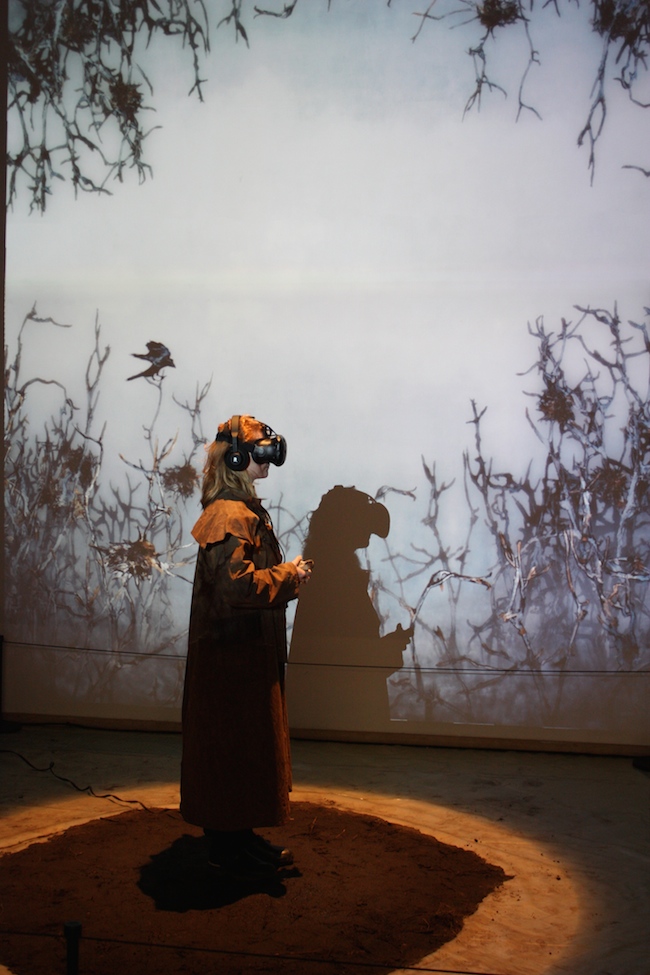
Cinematic and Virtual Reality installation ‘Nothing Happens’, 2016. Written and Directed by Michelle and Uri Kranot (Denmark, France). Photography by
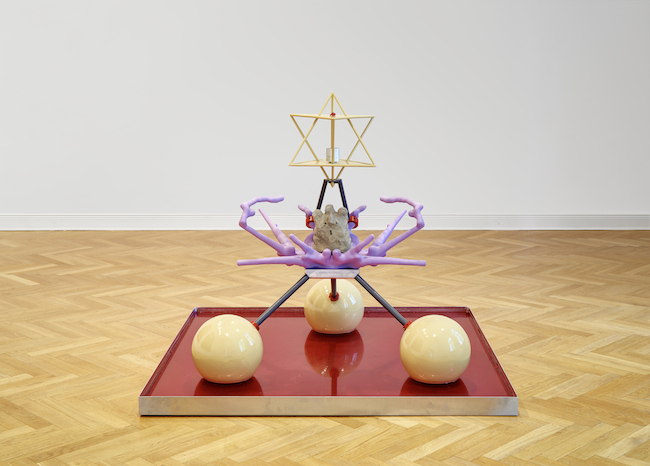
Iain Ball, (Rare Earth Sculptures) Terbium, 2015. Courtesy of the artist and Future Gallery, Berlin. Photo by Matthias Kolb

Katja Novitskova, Neolithic Potential (fire worship, yellow horns), 2016. Installation view from Kunsthal Charlottenborg, 2017. Photography by Anders Sune Berg
As a part of the festival, the group exhibition Welcome Too Late, curated by the Danish art critic and curator Toke Lykkeberg, already opened on Friday, 17 March, at Kunstahal Charlottenborg. The exhibition presents works by a number of prominent international artists, both from the younger generation – like Parker Ito (USA), Katja Novitskova (Estonia) and Marguerite Humeau (France) –as well as by Anne De Vries (Holland) and Tue Greenfort (Denmark), who hail from a slightly older generation; also featured are works by pioneer Eduardo Terrazas. The title and the concept of the exhibition take their point of departure from the fact that today, many artists and documentary filmmakers are experiencing the phenomenon that everything – from political situations, population growth, inequality, rising temperatures and sea levels, and the extinction of species, to technological advances – is accelerating and changing at such a pace that it has become difficult for them to keep up. They arrive too late in relation to their own time – the present is already the past, and the future surpasses the present so quickly, that it has become a virtually impossible task to document and describe the present. Time can no longer be measured linearly, but must be thought of in several dimensions. As a result, it has also become meaningless to use such terms as ‘the contemporary’ and ‘contemporary art’; instead, the exhibition builds on the idea of “Extemporary Art”. The works of the participating artists deal with this issue in various ways. This exhibition will go on after the festival itself ends, up through 28 May.
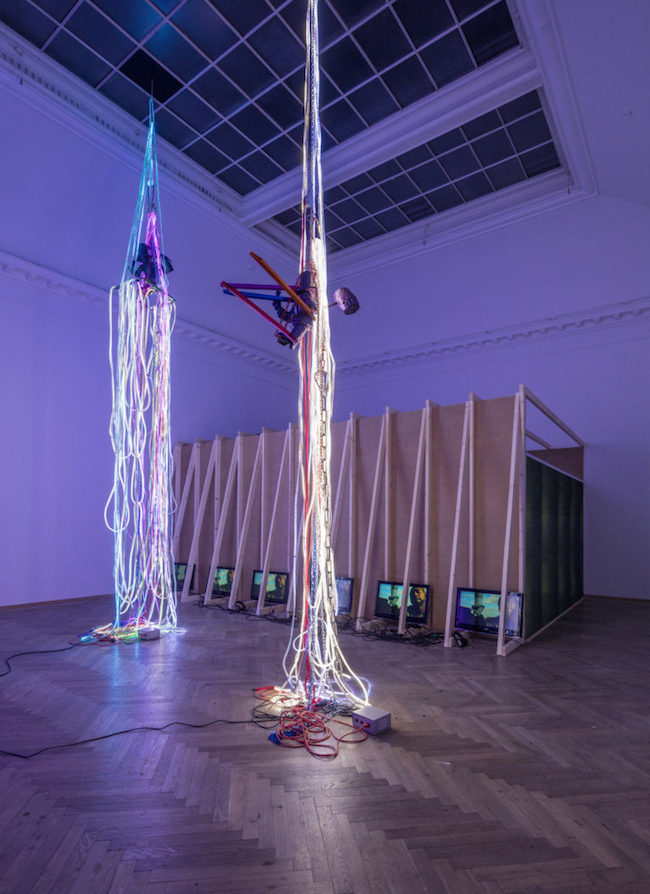
Parker Ito ‘Western Exterminator’, 2013-2015 & Eduardo Terrazas ‘Exponential Growth’, 2014. Installation view from Kunsthal Charlottenborg, 2017. Photography by Anders Sune Berg
The video installation Exponential Growth (2014), by the Mexican artist, architect, designer and urban planner Eduardo Terrazas, definitely seems to be one of the most popular works among the public. The installation is a square room in which the changing graphic patterns on the walls, floor and ceiling are mirrored infinitely, along with the reflections of its viewers; unsurprisingly, many have taken advantage of the piece as an opportune setting for a selfie. The installation is based on a series of graphic works, from 1975, that depicted unsustainable exponential growth through a white square, which is transferred into a black square through sixteen doublings of a pattern of black lines. The work was made to illustrate the limits of growth and the future of humanity as a result of unlimited industrial production, consumption of natural resources, pollution, and population growth – a topic that is now relevant more than ever, and among the key subjects for many documentaries in the programme.
Eduardo Terrazas ‘Exponential Growth’, 2014. Installation view from Kunsthal Charlottenborg. Photography by
The subjects of time and growth, among others, are focused upon and discussed from different positions in the new CPH:Science comprehensive programme, and its film series Before and After Science. In its first year, CPH:Science will present science documentaries, conversations between scientists and artists, and other activities that aim to make science more accessible and interesting for everyone. This interdisciplinary five-day conference on film, art, technology and science is devoted to exploring our new reality, the use of new technologies in art, the post-human condition with rising political awareness and activism, and how to coexist with artificial intelligence and robots, and how science and scientific research can be communicated to the general public, and last but not least, whether art can actually contribute to making a change.
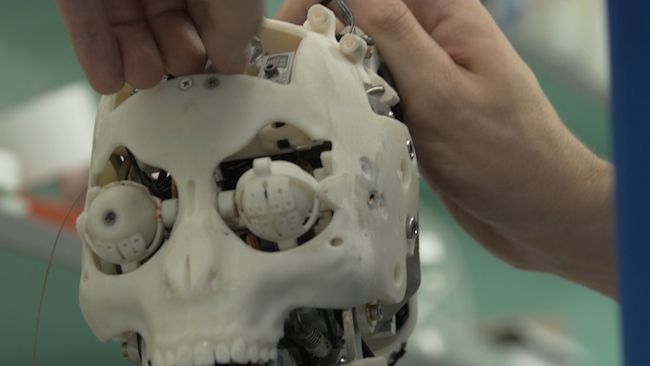
Machine of Human Dreams, 2016. Roy Cohen (United Kingdom). CPH:Science. Series: Before and After Science
Another unique experience listed on the programme, and which is a definite must-see, is the sound work Invisible City, by sound engineer Peter Albrechtsen and sound artist Jacob Kirkegaard; essentially, it draws a portrait of Copenhagen. The work has been recorded in ultra-precise Dolby Atmos 3D format, and will be performed for the first time in a cinema; what’s more, the presentation will take place in the biggest auditorium with Dolby Atmos sound in the world.

Invisible City
Whether it is love for cinema, art, music, science or technology, or a curiosity about accessing unfamiliar places, or the wish to experience the world from a different point of view, or even the desire to engage in and change the world, there are a lot of reasons not to miss CPH:DOX.


